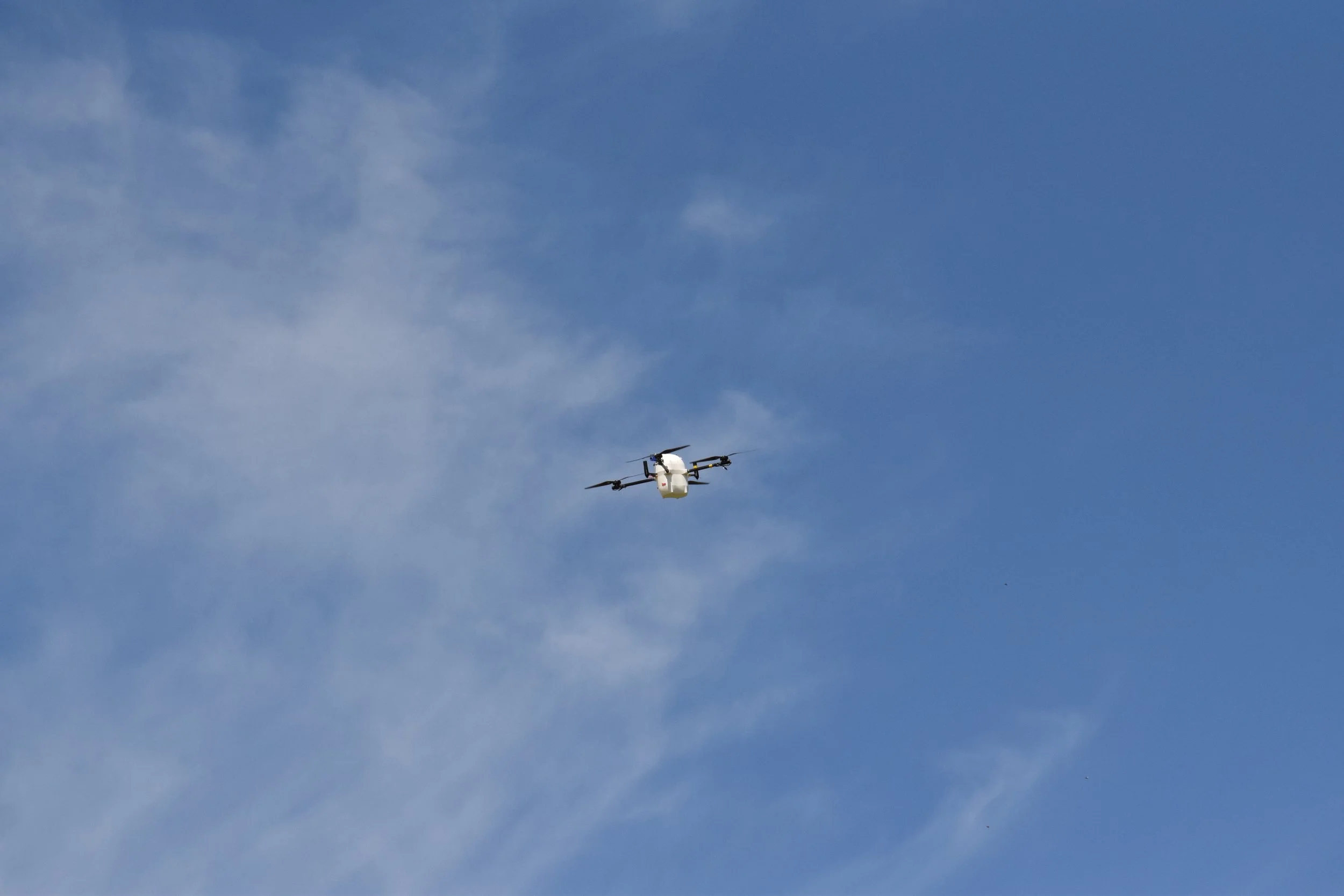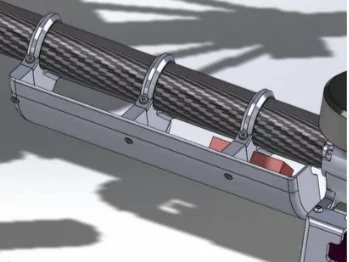
Case Studies
A deeper look into the MetSprite Platform’s deployments and custom sensor integration that Menapia has provided to our customers
NO2 Sensor
In March 2023, we visited KNMI’s 200 m mast at Cabauw, to run some validation tests against established sensing equipment, as well as integrate KNMI’s NO2 sensor.
Operational Aims
This demonstration with KNMI was an opportunity for us to validate our system and its capabilities. After meeting KNMI colleagues at World Meteorology Technology Exhibition 2022, we begun conversations to integrate their NO2 sensor. The sensor had previously been attached to a hobbyist drone but flying on MetSprite allowed for more accurate results.
Sensor Integration
Understanding the pre-established sensor setup that our client wanted to use, our engineers crafted a bespoke, modular design solution. This design, incorporating 3D printed parts, allows for seamless integration and ensures that data capture can occur without compromising the drone's performance.
Results

Wind Anemometer
In the Summer of 2023, we worked with a team of researchers led by the National Centre for Atmospheric Science, the University of Leeds, and the Met Office. We added a Li-Cor TriSonica Mini to MetSprite to be able to measure 3D winds.
Operational Aims
The WesCon campaign aimed to observe turbulent processes in our atmosphere in order to improve our ability to make high resolution weather forecasts. Although turbulence plays a key role in thunderstorms, there have been very few observations dedicated to evaluating turbulence in our skies.
Sensor Integration
As one of our sensor partners, Li-Cor worked with us to understand their sensor so our team could develop a novel solution to detect 3D winds, as shown clearly in the image below. For more information on our sensor partners, see below.
Results
Novel observational data were contributed using the MetSprite wxUAS over 130 hours and 700 flights. Daytime profiles were conducted in a variety of flight formations to study turbulent processes up to 2 km BVLOS (Beyond Visual Line Of Sight).
Below is an example of the data obtained with the MetSprite wxUAS on 21/08/23. Profiles to 2km AGL were conducted routinely every 30 mins.

Our MetSensor
With a dedicated focus on optimizing our sensing capabilities, and due to the casing being 3D-printed, we've been able to rapidly iterate the design of the MetSensor. Our sensor has undergone extensive validation, both internally and externally, against meteorological masts. The video below showcases our internal validation process at our Leeds test site.
Results
Spectra derived from 10-min hover with ambient horizontal northerly winds of 3–5 m/s.
Trisonica Mini was set to 10 Hz, corrections applied only for UAS motion and rotation.
Rapid Iteration of MetSensor
Q3/ Q4 2022
v1.0 —v1.3
Jan 2023
v2.0
April 2023
v3.0
May 2023
v3.1

Works with MetSprite™
The below sensors have been tried and tested on MetSprite. Our sensor partners are as dedicated to quality sensing as we are and their continued efforts to provide excellent products mean we are proud to give them the ‘'Works with MetSprite’ label.
If you are interested in adding your sensor to our ‘Works with MetSprite’ page, please get in touch

















